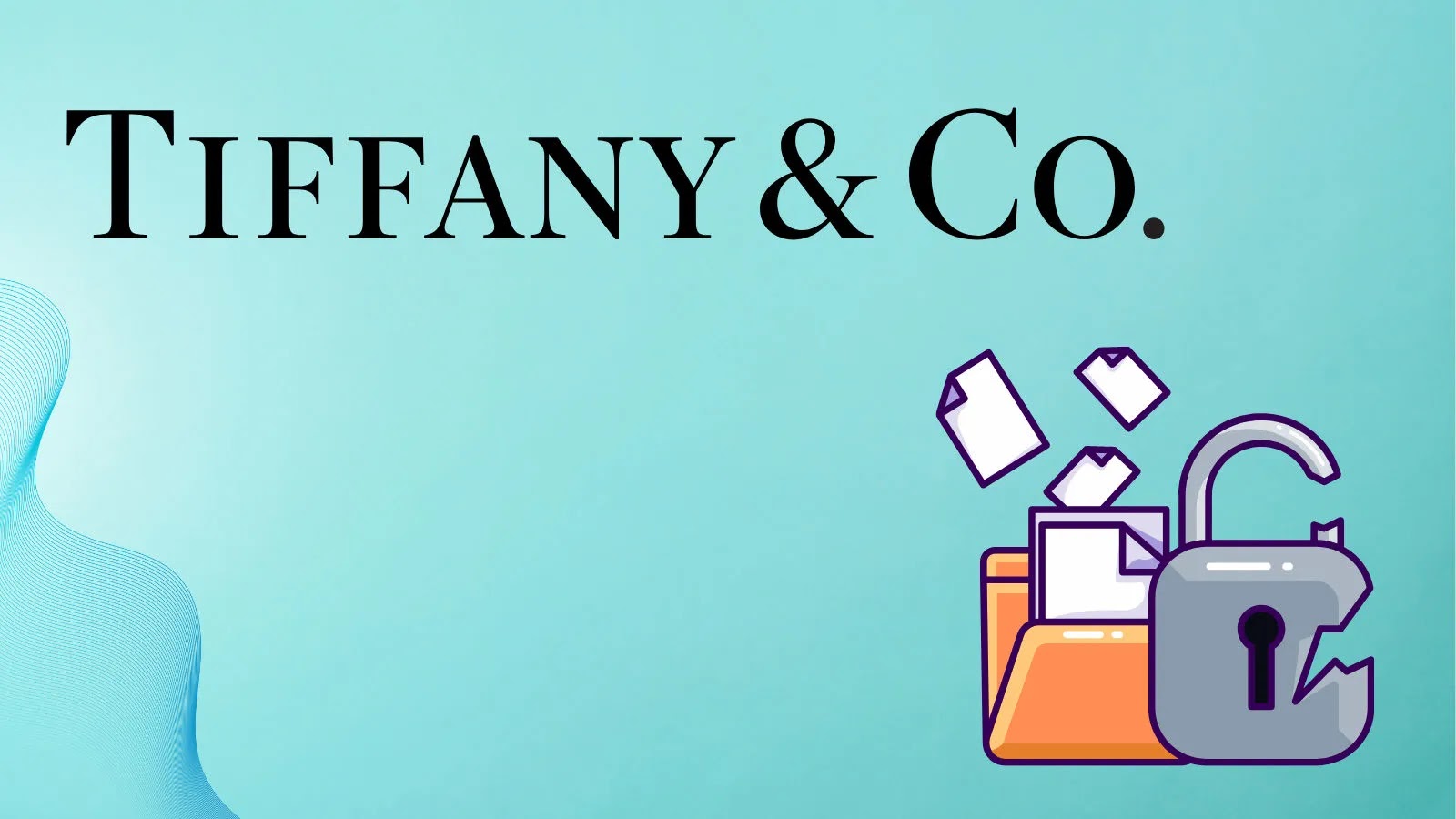
Luxury Jewelry Creator Tiffany Confirms Data breach – Hackers Stolen Users Personal Information
Tiffany & Co. Confirms Data Breach: A Deep Dive into High-Profile Customer Data Compromise
The esteemed world of luxury often evokes images of exclusivity and meticulous security. However, recent events have cast a shadow on this perception, as luxury jewelry icon Tiffany & Co. has officially confirmed a data breach. This incident, impacting the personal information of its discerning clientele, serves as a stark reminder that no entity, regardless of its stature, is immune to sophisticated cyber threats. For cybersecurity professionals, this development underscores the continuous need for robust defense strategies and proactive incident response.
The Anatomy of the Tiffany Data Breach
According to information extracted from the official confirmation and initial reports, Tiffany & Co. experienced a “cybersecurity issue.” While the specifics of the attack vector are not yet fully disclosed, the outcome is clear: customer personal information was compromised and stolen by threat actors. The company has initiated the process of notifying affected individuals, detailing the scope of the incident and the categories of data at risk. This proactive notification is a critical step in maintaining transparency and allowing affected parties to take necessary precautions.
Data Compromised: What Was Stolen?
While the exact complete list of compromised data points is still emerging and will likely be fully detailed in the notification letters, such breaches typically involve sensitive personal identifiers. Based on common data breach patterns, the stolen information could include, but is not limited to:
- Full Names: Essential for identity theft.
- Contact Information: Such as email addresses and potentially phone numbers.
- Physical Addresses: Critical for targeted phishing or physical theft.
- Purchase History: While not directly financial, this can be used for social engineering or market analysis by malicious actors.
It is imperative for affected customers to scrutinize the notifications from Tiffany & Co. to understand the precise data elements that were exfiltrated. This information empowers them to monitor for suspicious activity relevant to the compromised data types.
Implications for Customers and the Luxury Brand Sector
For individuals whose data has been stolen, the potential ramifications are significant. This includes an elevated risk of:
- Identity Theft: Malicious actors can use stolen personal information to open fraudulent accounts, make unauthorized purchases, or apply for loans in the victim’s name.
- Phishing and Social Engineering: Armed with personal details, attackers can craft highly convincing phishing emails or messages, attempting to elicit further sensitive information or deploy malware.
- Fraudulent Transactions: Though not explicitly stated as compromised, any associated payment details could become targets for fraudulent use.
For the luxury brand sector, this incident highlights a critical vulnerability. High-net-worth customers are prime targets for cyber criminals due to their perceived financial resources. A breach of trust, particularly concerning personal data, can severely damage a brand’s reputation and customer loyalty, which are paramount in the luxury market.
Remediation Actions and Cybersecurity Best Practices Post-Breach
In the wake of such a breach, robust remediation is crucial for both the affected organization and its customers. While Tiffany & Co. is undertaking its internal response, here are recommended actions:
For Affected Individuals:
- Review Notification Letters Carefully: Understand exactly what data was compromised.
- Monitor Financial Statements: Regularly check bank and credit card statements for any unauthorized transactions.
- Enable Multi-Factor Authentication (MFA): Implement MFA on all online accounts, especially those linked to sensitive financial or personal information.
- Change Passwords: Especially for accounts that used similar credentials or are linked to the compromised email address. Use strong, unique passwords.
- Be Wary of Phishing Attempts: Exercise extreme caution with unsolicited emails or messages, particularly those claiming to be from Tiffany & Co. or related financial institutions.
- Consider Credit Monitoring: Enroll in credit monitoring services if offered by Tiffany & Co. or through a reputable third party. This can help detect early signs of identity theft.
For Organizations (Lessons Learned):
- Conduct Thorough Forensics: A deep dive into the breach’s root cause, attack vector, and extent of data exfiltration is non-negotiable.
- Strengthen Access Controls: Implement least privilege principles and robust access management solutions, particularly for systems handling sensitive customer data.
- Enhance Data Encryption: Ensure that sensitive data, both at rest and in transit, is encrypted using strong cryptographic algorithms.
- Regular Vulnerability Assessments and Penetration Testing: Proactive identification and remediation of security weaknesses are essential.
- Employee Training: Phishing awareness and secure coding practices are vital to building a strong human firewall.
- Incident Response Plan Review: Regularly test and update incident response plans to ensure swift and effective handling of future cybersecurity incidents.
- Vendor Security Assessment: If the breach originated from a third-party vendor, reassess their security posture and contractual obligations.
Conclusion: The Unyielding Importance of Cyber Resilience
The Tiffany & Co. data breach reinforces a critical truth: cybersecurity is not merely an IT concern, but a fundamental business imperative. For luxury brands handling high-value customer data, the stakes are exceptionally high. This incident serves as a call to action for all organizations to continuously bolster their cyber defenses, educate their workforce, and prepare for the inevitable challenges posed by an increasingly sophisticated threat landscape. Proactive security measures, coupled with transparent and efficient incident response, are the cornerstones of maintaining trust and resilience in the digital age.





